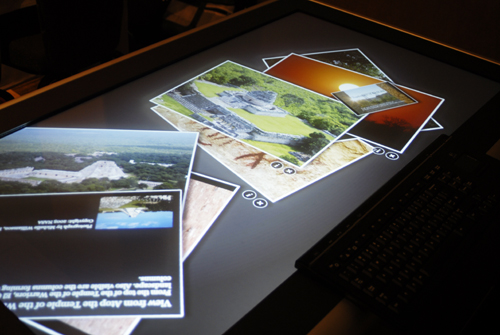So tonight the students brave enough to take the class that Aaron Cope and I have led at Pratt this semester opened their exhibition. I say ‘brave enough’ because this was always going to be a seat-of-your-pants experimental class broadly titled “Museums and the Network: Caravaggio in the age of Dan Flavin lights”. It ended up covering everything theoretical from digital culture, media art theory, surveillance, and startups through to the more prosaic intricacies of map making, databases, web scraping, object labels and networked project management.
But graduate students in the information and library sciences are an eager and very talented bunch. And the chaotic tendencies of both Aaron and I were tempered by a stellar set of guests who parted their professional wisdom – Sherri Wasserman, John Powers, Dan Phiffer, Fiona Romeo, Virginia Gow, George Oates, Nicole Cama, Matt Knutzen, and John Allspaw.
After their first class project collected data from cultural institutions around New York to build network maps of philanthropy – thedonorparty.com – something very aligned with the ‘digital’ nature of the course, their main project forced them to start again and built a physical exhibition with tangible objects, but informed by their growing understanding of “the affordances of the networks that surround and envelop them”.
The exhibition, its topic, its objects, and its argument were all their responsibility and the one they ended up choosing to explore was ‘Communting and Communing’. The exhibition “explores several facets of the act of commuting on the NYC subway … we have organized an exhibition that explores the subway’s sights and sounds, the interactions that occur with people as well as objects and the virtual communities that come together as a result of their commuter experience.”
Here’s some photos from the opening.

Hand-recorded visualisation of happenings on a single end-to-end train journey

Some found objects and the hardware running the MTA.WIFI backchannel

Overheard conversations on Japanese fans with hyperlinks to computer-voiced conversations

Array of found objects with geospatial metadata

Found objects detail and hyperlinks

More found objects and hyperlinks

Text panel for sound clips and video loops

Backchannel label

Aaron Cope visits the exhibition ‘over the network’ from a hotel room in Rotterdam (DISH2013)
Of course, this course was about ‘the Network’ so the students have used Tumblr as their collection management system and exhibition catalogue. The ‘archive’ view of Tumblr provides a great way of visually browsing the objects and other media assets, whilst the standard view gives a more linear look complete with auto-playing subway soundtrack. The catalogue includes all the found objects, nicely accessioned and photographed with location metadata, as well as documentary and process evidence. There’s a Twitter account too.
The exhibition also included short URLs for every object bringing visitors back to additional information and in the case of the fans, supporting media. The commuter video loops were accompanied by audio soundtracks that can be downloaded for playback on your own subway journeys too. A final AV component was a subway Supercut! More of this content is going up to the Tumlr over the next few days.
For the exhibition backchannel, a public wifi darknet was set up using Dan Phiffer’s Occupy.Here projects its basis. This allowed visitors to post comments and images anonymously whilst in the exhibition.
If you’re in New York and would like to pop in and see it drop me a line and I’ll see what can be done.
And great work class of 2013!




